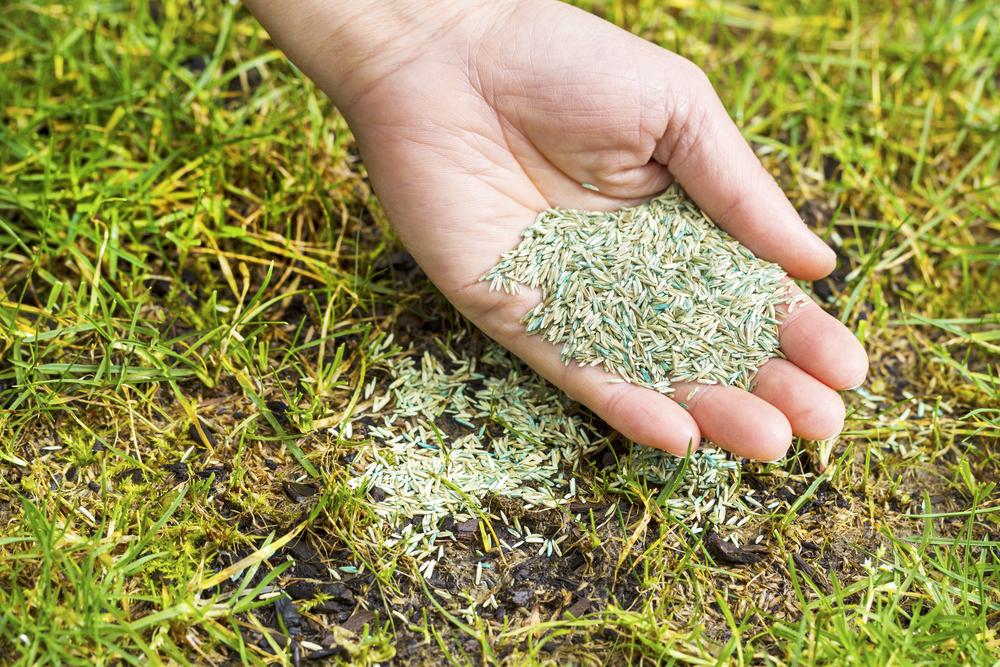Is your lawn showing patches of brown? Or bare places where the soil shows? Is it hard to find the grass through the weeds? It might be time to renovate your lawn.
The process of lawn renovation involves planting grass seed into an existing lawn area. Adding new grass varieties can help to repair damage or increase tolerance to drought, shade, or wear.
First, you need to determine if you can simply renovate your lawn, or, if you need to start from scratch. Take a moment to inspect your lawn. If there’s at least 50% lawn left, you can renovate it. Is the lawn completely overrun with weeds? You’ll need to deal with those pesky plants first, or, start from scratch.
Late summer and fall are the best times for grass renovation. Cooler temps and abundant rains make it easy on your tiny new seedlings. Ready to get started? Here’s a handy checklist:
- Eliminate weeds: Unless your lawn is completely overrun with weeds, apply an herbicide to get rid of them before re-seeding. Use a non-selective herbicide that contains the active ingredient glyphosate. Other non-selective herbicides include glufosinate or the herbicidal soap formulation Scythe. You’ll be able to start seeding in about a week. If you use a selective herbicide your new seeds won’t germinate for up to six weeks. Make sure the herbicide dries before walking on it!
- Remove moss: in our moisture laden Pacific Northwest, moss can be a problem. Use an iron-based moss-killer when the moss is moist and green. Use a thatching rake or cultivator to remove dead moss. Apply moss killer at least 3 weeks prior to seeding.
- Remove debris and thatch: Set your lawn mower on its lowest cutting height and mow to approximately three-quarters inch tall. Sweep or rake all clippings, leaves, and other debris.
- Fill in holes or uneven areas. Amend the existing topsoil with inexpensive Biosolid organic fertilizers such as Dr. Earth Super Natural Lawn Food; Ph adjusting products like lime or Solu-cal if needed; Gypsum or Solu-cal S to help condition clay soils; Any quality animal manure based organic fertilizer.
- Soak the soil: Before applying seed, soak the soil to a depth of 6-8”. This gives seedlings a head start, especially after a dry season.
- Select a good turf grass recommended for the Pacific Northwest. Turf-type perennial rye grasses and fine-leaved fescues are perfect for western Washington. Avoid the short-lived Kentucky Bluegrass or the high-maintenance Bentgrass. Spread the seed evenly with a hand-held spreader for small jobs or a drop spreader for larger jobs. Lightly rake the seeds until they are covered by no more than 1/16th inches of soil.
- Keep the seedlings moist with repeated light watering. Keep foot traffic off the area.
- Once 60% of the seed has sprouted to 3-4”, mow it to around 2” tall.
Your yard will look fantastic with a renovated lawn. If you need help, feel free to give us a call at (360) 265-5231. Happy renovating!
